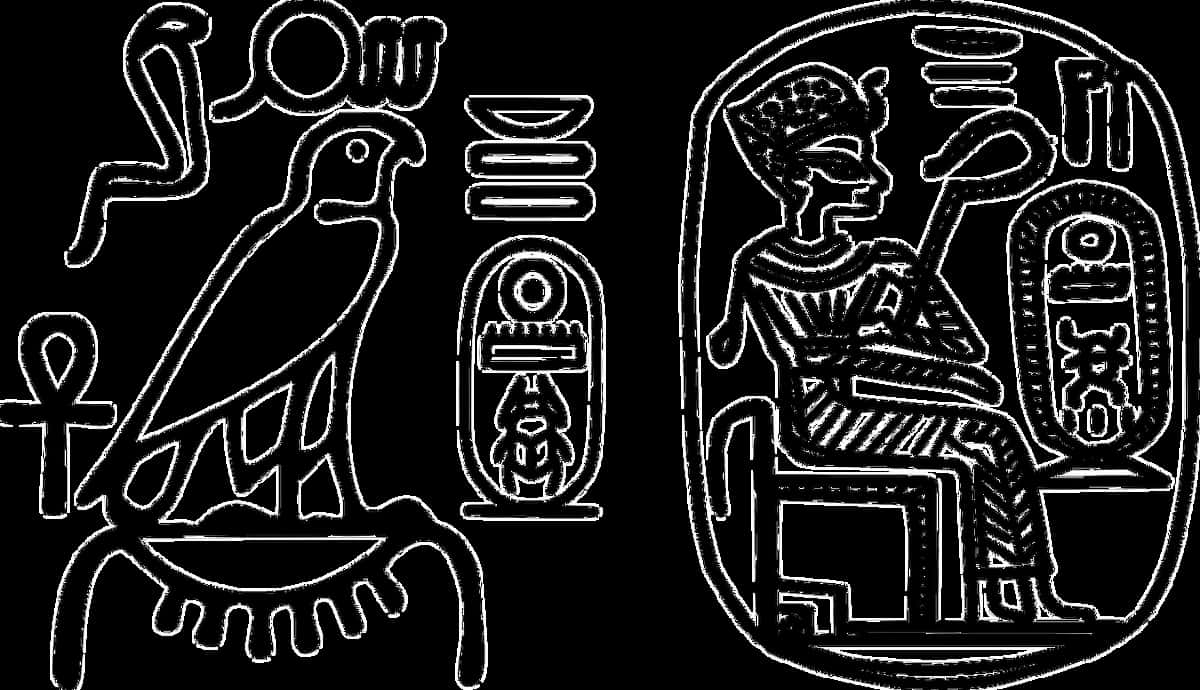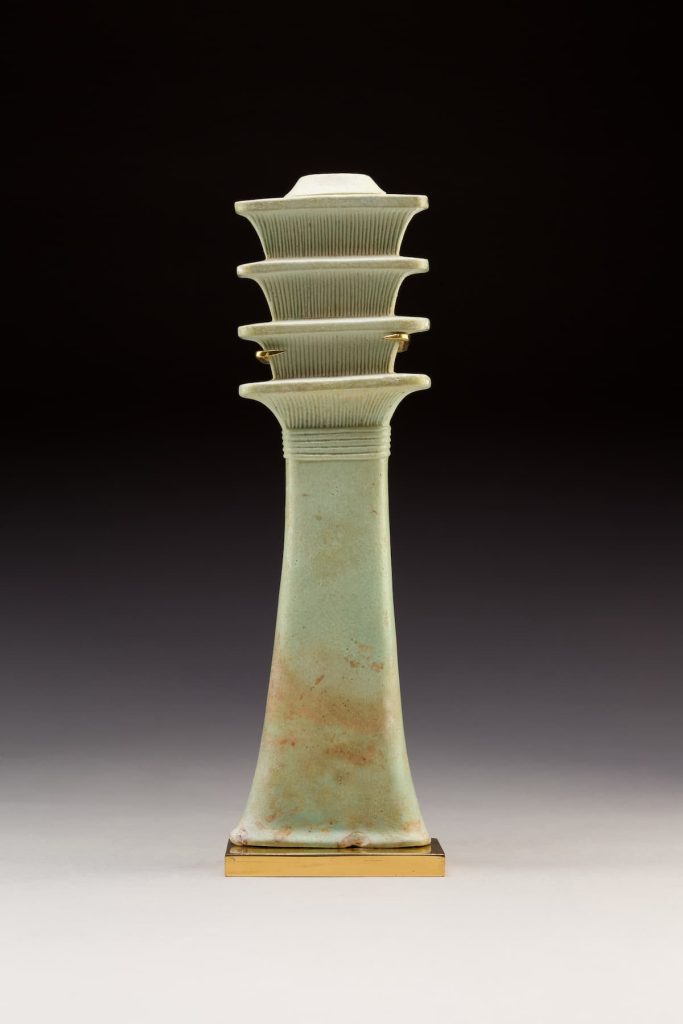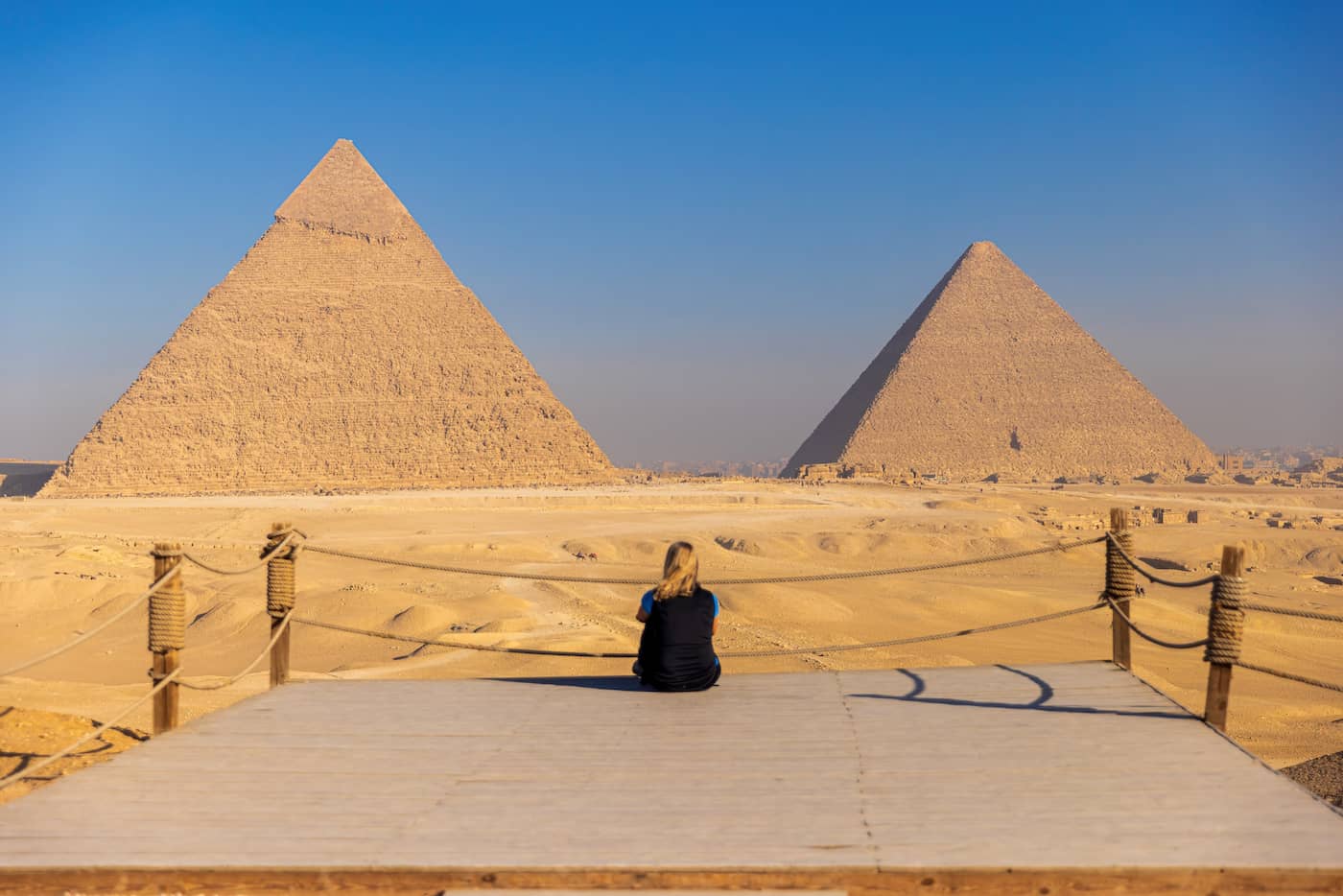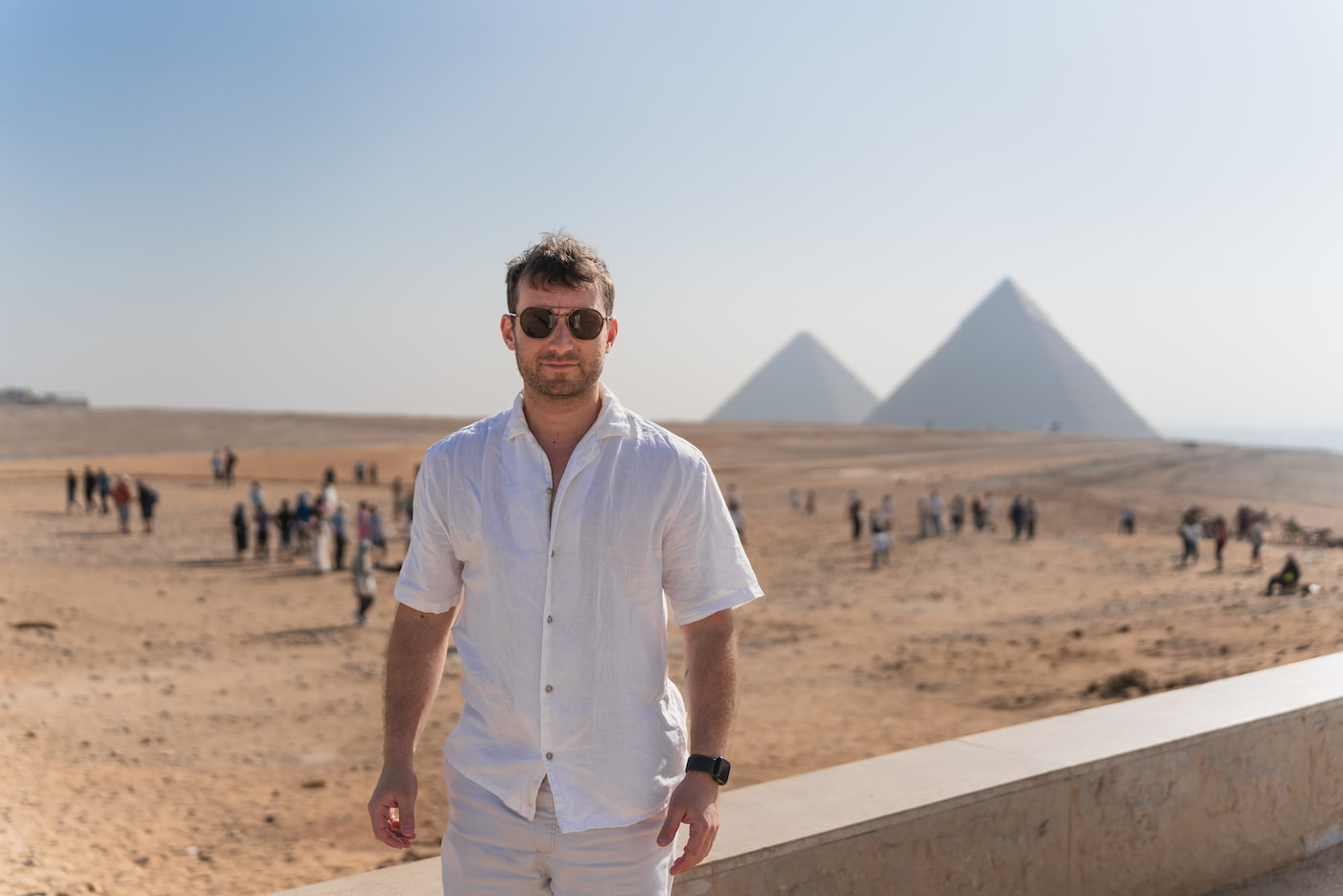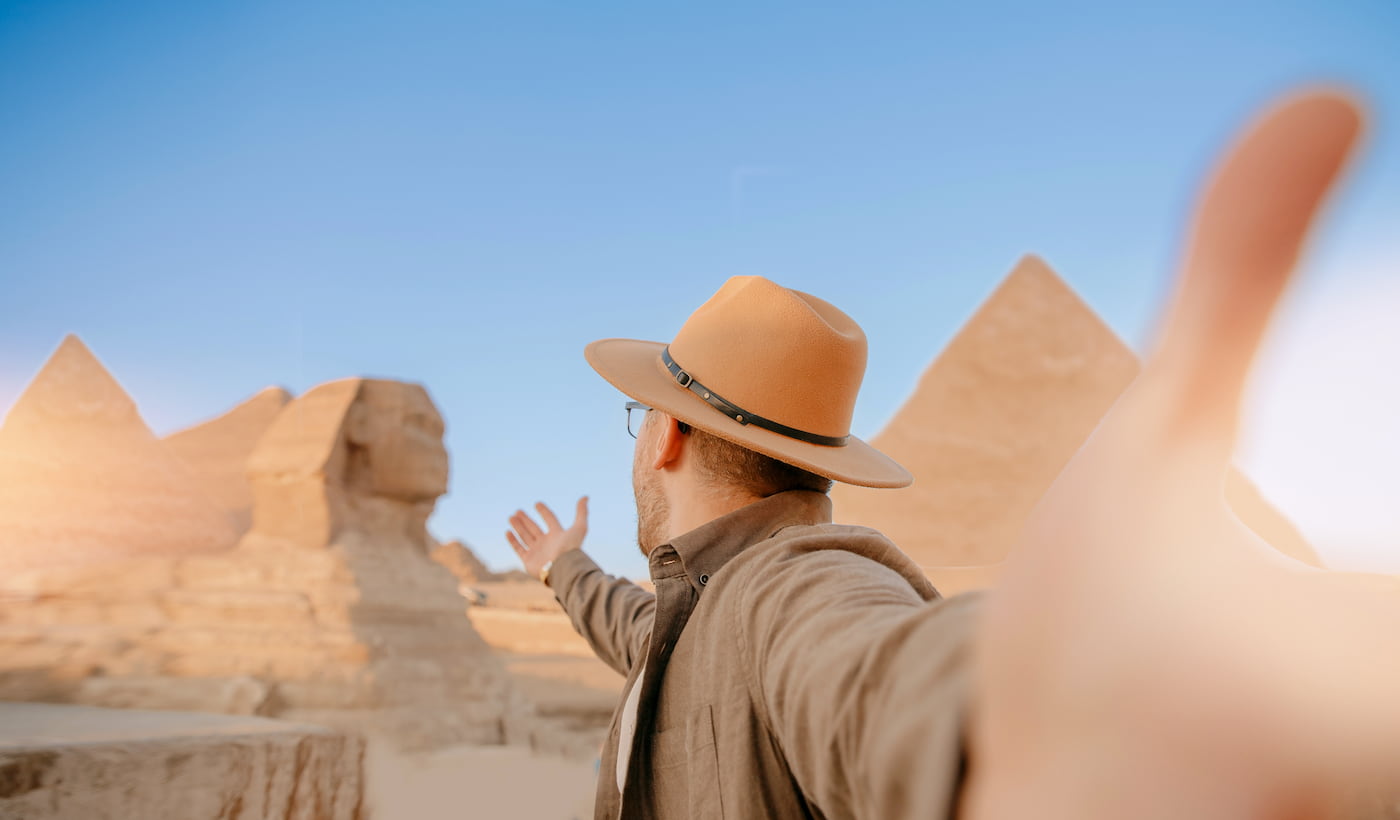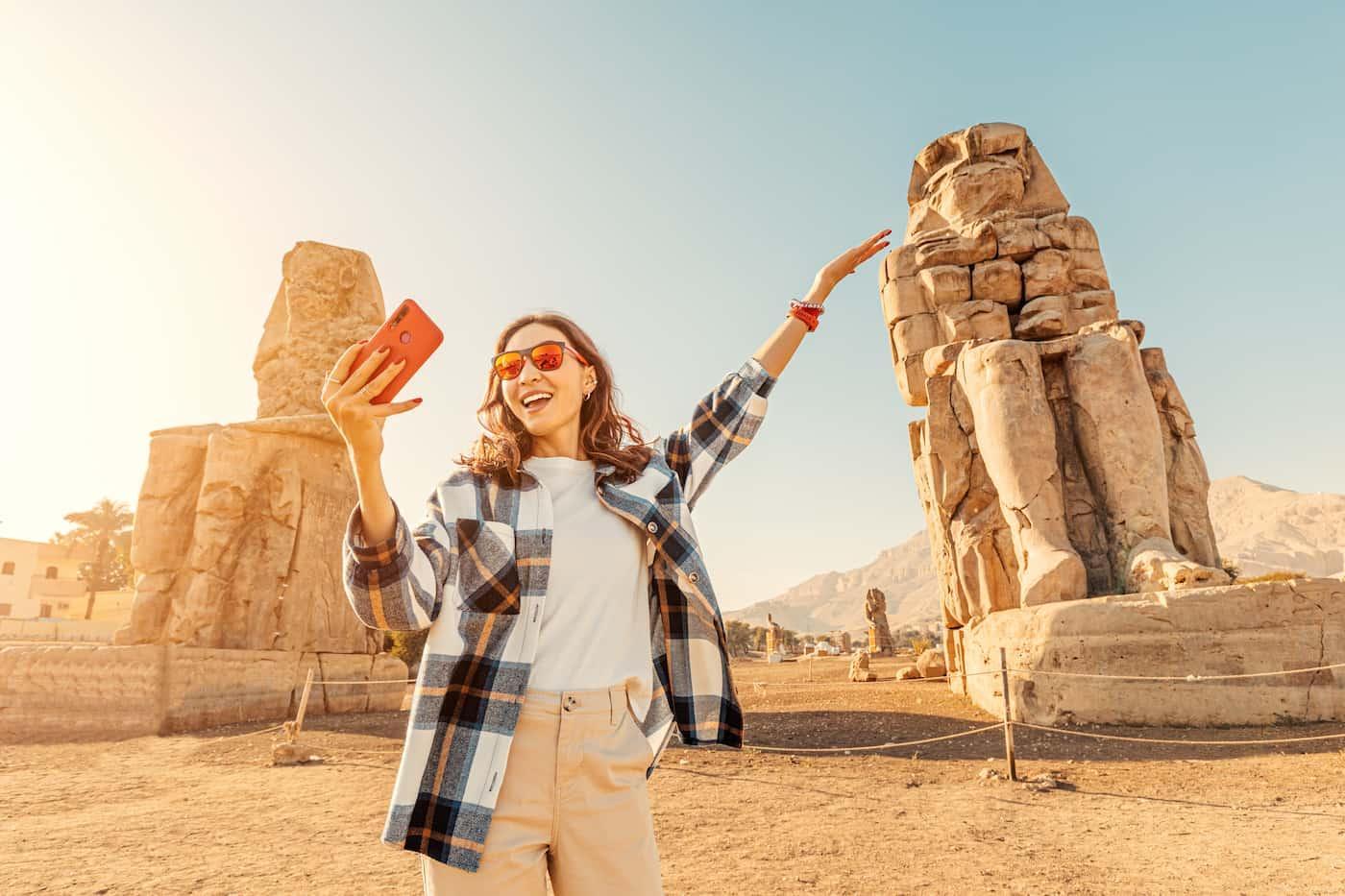Why Egyptian Symbols Still Fascinate Us
There is a variety of clothing worn by all the people which have Egyptian symbols. Other styles of products featuring Egyptian symbols, such as one in the picture, are shoes, caps, mobile phone cases, and posters. Interested in people around the globe, the Egyptian motifs are represented in pictures designed for hair, tattoos, or body art. Some of these designs include t-shirts and tanks, bracelets, necklaces, rings, and even sweatshirts with Egyptian logos.
Ancient Egyptian symbols do far more than merely imitate a particular person. To be more specific, the Eye of Ra, the Ankh, or the Scarab are among the various popular Egyptian symbols. They go beyond aesthetics and have a deep and powerful meaning that rises above the ages.
Egyptian Symbols in Modern Fashion and Culture
Does the concept of an Egyptian symbol and why it remains a popular object to many in the present day come to mind? In ancient Egypt, it was understood that images had more value than a pleasing appearance. They were interpreted as the divine connection, a form of protective medicine or even a do-not-disturb badge. No wonder these images were used in writing, religious practices, tombs, and the after-death narration of the pharaoh. Each symbol was used in a ritual or a special occasion, and the spiritual significance unlocked formation, hence many were forbidden.
Egyptian symbols remain popular today and are often associated with this mystical aura or spiritual attractiveness. Detailed insight has been pointed to as the foundation symbolized by Ma’at, the tranquility in certainty, including the Sachmet scepter, and last but not least, the immortality guarantor by the Ankh. It is therefore no surprise that these sacred symbols are more universal in meaning since they represent strength, wisdom, and magic, which are timeless.
Thus, there is ample evidence that the traditions of Egypt continue to modify and evolve in the contemporary context.
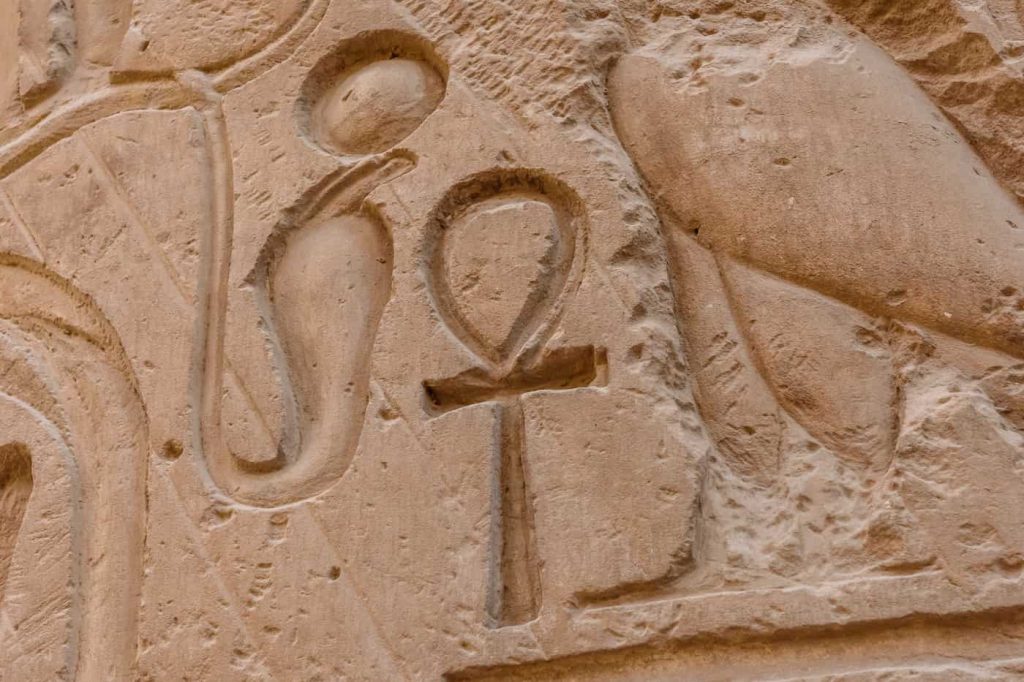
🔹 2. The Role of Symbols in Ancient Egyptian Culture
In the ancient civilization of Egypt, the prevalence of its symbols lay not merely in their beauty, but as the basic instruments of society that helped in the discourse, rites, and window. According to the Egyptians, everything and every creature was part of a system and thus imbued with a particular stylized meaning. These meanings were all presented with visual representations called hieroglyphs, a symbolic form of speech that united phonetic signs with notation and pictures to form statements, propagate laws, and direct the soul to heaven.
Thirdly, symbols were directly connected to the sphere of worship and wonders. Mediation of these forces, the ties with gods, is conducted by priests and scribes who use magical symbols and practices to activate the god/goddess or gods/goddesses, fight various dangers and evils using protective symbols, and promote the energies of Ma’at’s unity through (…). Decorated with these symbols, amulets designed in the shape of the Eye of Horus, Ankh, or Scarab were believed to bring protection, good health, and spiritual power to the individual.
Every soul, whether a peasant woman or a king, would see his ancient and so formidable God, and every act, no matter how small, would be regarded as critical for all people and the whole universe set up in full play.

🔹 3. Top 10 Most Powerful Egyptian Symbols and Their Meanings
-
Ankh – Symbol of life
One of the most engraved images in ancient Egypt is the Ankh Symbol. As some describe it, it is similar to a cross but with a loop on top, which gives it the plausible nickname of ‘the key of life’ or ‘the breath of life.’ With the old people, an ankh was a token in the sense that it gave them satisfaction as it had become an assurance of everlasting life, God’s force, as well as an element that combines opposing sides, man and woman, earth and heaven.
Such a strong symbol as this was typically found in the hands of the theoni, the gods or pharaohs who offered it to human beings or who sought to revive the deceased by inserting it into his nostrils during the funeral ceremonies. Also, it was put as an amulet in order to help obtain more energy and spiritual protection, and also such amulets as ankhs helped to prevent premature aging among wearers.
To this day, ankhs continue to be popular in jewelry and mystical beliefs due to their beautiful form and deep symbolic nature. It serves as a worldwide insignia of existence, symmetry, and holy relationships.

-
Eye of Horus – Protection and healing
The Eye of Horus, which is also referred to as the Wedjat, is one of the most influential and popular symbols in ancient Egyptian culture. It is connected to the connotations of protection, recovery, unity, and prophetic awareness. As the story has it, Horus, the falcon-faced god, has lost one of his eyes while fighting with Seth, the god of disorder. As the legend goes, the god Thoth, who has the magical powers, then rejuvenates his eye to health, and hence began the association of the eye with regeneration and well-being.
The Eye of Horus was often painted on the surface of tombs, sarcophagi, and boats, and this was believed to help guide and protect the soul from the evil forces while traveling to the other world. It was also believed that it would be effective in preventing sickness and misfortune, including disasters, and that is why it was used as a charm by the living.
Featuring an unusual artistic design, which is suggestive of that of a bird embellished with curved lines, such that the drawing endorses a falcon-like appearance, it remains a piece of fascination even to this date. Today, you can notice many people wearing or using it as a piece of striking jewellery or putting it in their houses to ornament the spirit or fortify their inner strength.

-
Scarab Beetle – Transformation and rebirth
The scarab beetle was highly cherished and significant in the culture of ancient Egypt. As something that signified reincarnation, renewal, and creation, it was made in emulation of the poop-rolling dung beetle. This creature of the scarab beetle was one of the lords of it and the deliverer of creation to the world of gods, life-giving primordial chaos to order provinces the universe. Thus, artists used the image of the humble dung beetle in an illustrated way to express some deeper philosophies concerning the nature of divine power and the codes of order that it imposes.
The holarbic dung beetle carries out its whole life cycle in and around the dung ball, and this symbol cropped up in religious writings at the time. The scarab seemingly hatches out of the ground into a perfect state. This meant that it was a strong testament to not only the creation aspect of life but its eternal cycle. The heart of the mummy also contained a scarab amulet, which acted as a guide for the soul on its journey in the next world and to safeguard it from malevolent entities. And it so happened that a lot of these scarabs also had the spells or inscriptions from the Book of the Dead.
Scarab signs indicated above were not only exhibited but were also woven in ornaments, portrayed as seals, and embroidered onto pyramids. It is worth noting that the scarab, as a symbol of an individual’s personal development, stress resilience, and spiritual fieriness, is seen even now.

-
Djed Pillar – Stability of Egyptian Symbol
The Djed pillar is a symbol ancient Egyptians used to refer to stability, perseverance, and spiritual strength. Often referred to as the “spine of Osiris,” the god of the afterlife, the djed was thought to represent the internal stability of the universe and order, while denoting the strength of resurrection too.
Although the columns, along with the horizontal lines, are clubs, this djed was also related to the concept of rebirth, as the re-establishment of form and order following chaos. It was also an important part of funerary sacrifices, where it was usually kept close to tombs and buried with bodies as a method of spiritual instruction, aiding in the ascent of the deceased in the afterlife.
The return of the Djed and the festival of its resurrection was always an event when the extension of life past death overtook death. Even in our days, the Djed is considered the timeless mark of how strong one is, how resilient, and the ability to stay connected even when everything, including the most personal structure, is causing wreckage.
-
Was Scepter – Power and dominion
In ancient Egyptian times, the Was scepter was a well-known symbol of power that involved the bearing of a fork-like baton, which had an animal’s head at the other end. This scepter was mostly found being held by gods, pharaohs, including high priests to attest that they had the upper hand in the face of upheaval and performed a lot in maintaining the order of the cosmos.
For a record, the word “was” is translated as “power” or “strength,” and this fits well in the worship of the god. Its image appeared in a significant number of now existing religious drawings, carvings on the walls of the celestial abodes of the god, and burial sites of the deceased kings and queens. In the hands of deities like Anubis and Set, the symbol of the Was signified that they were in the position of controlling and affecting the aspects of life and death.
Both from the perspective of mythology and everyday life, the symbol was also functional as it assured the population that the management system, including religious practice, was approved by the divine powers. Given the desire for the Was scepter to be perceived as conveying the balance of a cosmos and a political system through a visual metaphor, one can think of a Was scepter as the device that displays how human government conforms with divine power.
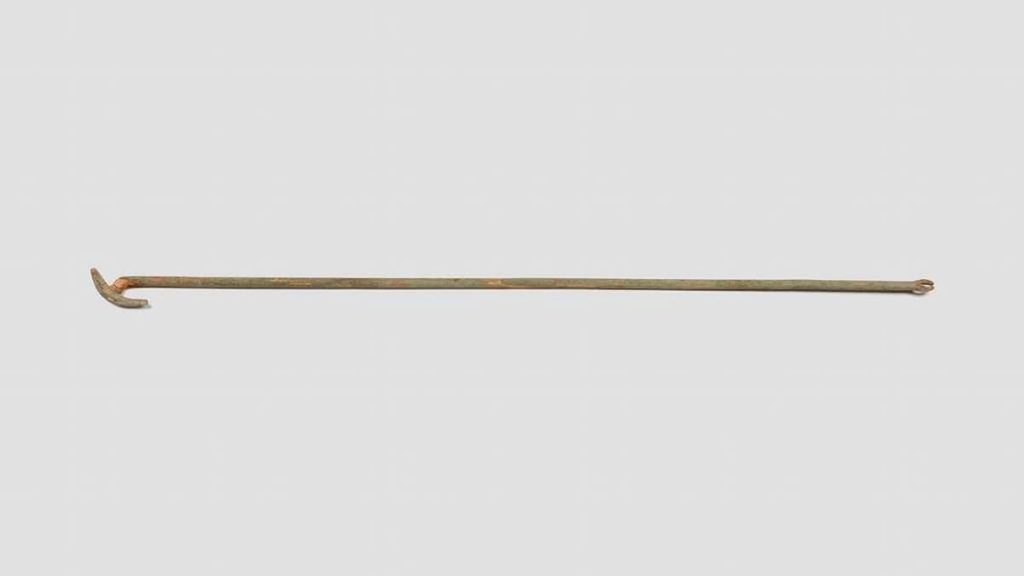
-
Lotus Flower – Rebirth and purity
The lotus flower was a significant symbol of ancient Egypt, where it depicted rebirth, creation, and purity. The unique characteristic of this lovely flower was the fact that it would close itself at night and go underwater, only to rise and open its petals late in the day. It is just this attribute that makes it a strong sign of refreshment, and the never-ending process of life institution.
As well, concerning the god of the sun, Ra, there is a strong interrelation, since it was the lotus which was thought to have risen from the waters of creation at the moment of existence, hence bringing into the world the sun. Moreover, it is also because of it that the lotus often appeared in religious contexts such as temple decoration, in art and regenerative signs, especially connected with the rejuvenation of the body, the rejuvenation of the spiritual being, and in the funerary context.
It was also believed that the soul does not often find purity, and that purity does not succumb to the temptation of defilement. It was often placed in the hands of the gods, especially the healing and beauty’s, and of course, the god of healing and beauty, Nefertem. Still today, the lotus flower is used as a reminder and inspiration of what inner peace and growth are.
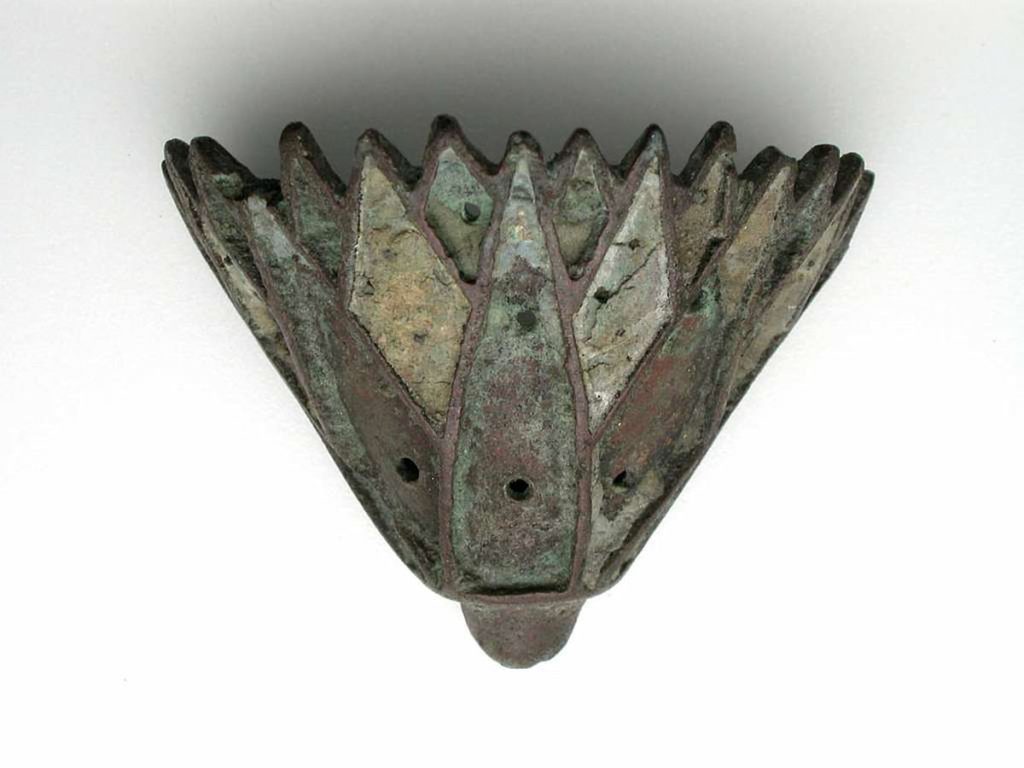
-
Feather of Ma’at – Truth and justice of Egyptian Symbol
Ma’at was revered in ancient Egypt as a symbol of several spiritual values, including truth, fairness, equilibrium, and all that is associated with the ultimate realm. Ma’at, the Lady of truth and law, was usually managed with an ostrich feather on her head. Ultimately, this ostrich feather figured as the most prominent aspect of social morality.
In the judgment of the dead, the hearts of the deceased were put on a scale and weighed against Maat’s feather. If the heart proved to be lighter than or equal to the feather, then the soul was pronounced pure and qualified to attain the afterlife. However, if there was a notable difference, then the soul was handed over to Ammit for destruction after the judgment.
This feather also impressed upon the people of Egypt why it was necessary to live an honest, upright, and morally justified life. It also appeared in temples, legal inscriptions, and was associated with judges or priests as an indispensable reminder of their responsibilities for Ma’at’s absolute rule.

Uraeus is known to represent power that is attributed to the king, the divine authority, or as protection in the Egyptian pictorial language. Often represented as a rearing snake, the Uraeus was always worn on the forehead, more so issued as a hook on the crowns of pharaohs, and it was to represent the striking down of the ruler’s enemies.
This snake is said to embody the goddess Wadjet, feared as a defender of Lower Egypt. To this end, it was believed to be the image that not only held enemies off, but went further to fight Pharaoh’s battles by use of her burning fires. Hence, the king was reassured that he was not just a king in name but also by the gift of the god.
The Uraeus symbol was also widespread in the forms of temple decorations. It was used quite often to make wall carvings, in statues, tombs, equities, and other bone carvings, and it was often run oddly. It was a protective device and prevented evil, as well as sealed the relationship between the pharaoh and the gods. Even in contemporary times, Uraeus is an emblem for freedom and spirituality that does not lose value.

-
Sphinx – Divine guardianship of Egyptian Symbol
One of the incredible shrines of the ancient scepter is the Sphinx, which is associated with a variety of themes. These themes are intended to be connected with defence, enlightenment, and spiritual guidance. The body of the Sphinx is always that of a lion, while the face is that of a person; hence, the combination of strength and wit. It was usually placed at the entryway of temples, mausoleums, and holy places, guarded against anyone who was deemed harmful and to shield the sacred knowledge within.
What stands out the most is the notorious Great Sphinx, believed to be that of Pharaoh Khafre. It was chiseled and engraved from a single block of limestone, and has been standing with stoned in hands over the pyramids for many years, symbolizing royalty and cosmic entitlement.
In the ancient civilization of the pharaohs, the Sphinx was an emblem of the ruler as the enforcer of Ma’at and peace. People believed that it was able to see the physical and spiritual worlds, which is why it remained a guard forever. As of today, the attraction of the Sphinx Stone remains a magnet, attracting masses of people as they realize they do not know much about it, but it stands for power and ancient civilizations.

The Great Sphinx
-
Cartouche – Name protection of Egyptian Symbol
The cartouche is a figure that is shaped like an oval, encircling a character or a hieroglyph set, typically used to represent the name of a king or other person with royal status. Equivalent to a sekkhem scepter of power of kings, available to Ethiopian monarchs.
To the belief system of ancient Egyptians, the inclusion of a name within a cartouche meant giving that name divine protection, enabling that person through the immortalization of their identification. In other words, inclusion of one’s name in a cartouche was not mere decoration; the cartouche was much more than that; it was correspondingly magic. The ancient Egyptians were of the opinion that when they knew the name of someone and were able to preserve it, they could be in control of that person even in the afterlife. By the placement of cartouches in the hollow cores of tombs, on the coffins, or on the walls of a temple, some or all of the kings and queens had once again been safeguarded against both forcible erasure and time, which tended to cause defamation of historical events.
Both vertical and horizontal were the primary ways the cartouche was written, as this was an extension of the same loop that was changed periodically. It was refined to feature a circular chain whose confines were considered sacred and sufficed to keep the bad elements away from the individual. Today, a lot of people love to adorn items with their name in hieroglyphs within a stylish Egyptian pendant, and many ingeniously appreciate this ancient print as a sign of one’s being, and a promise.
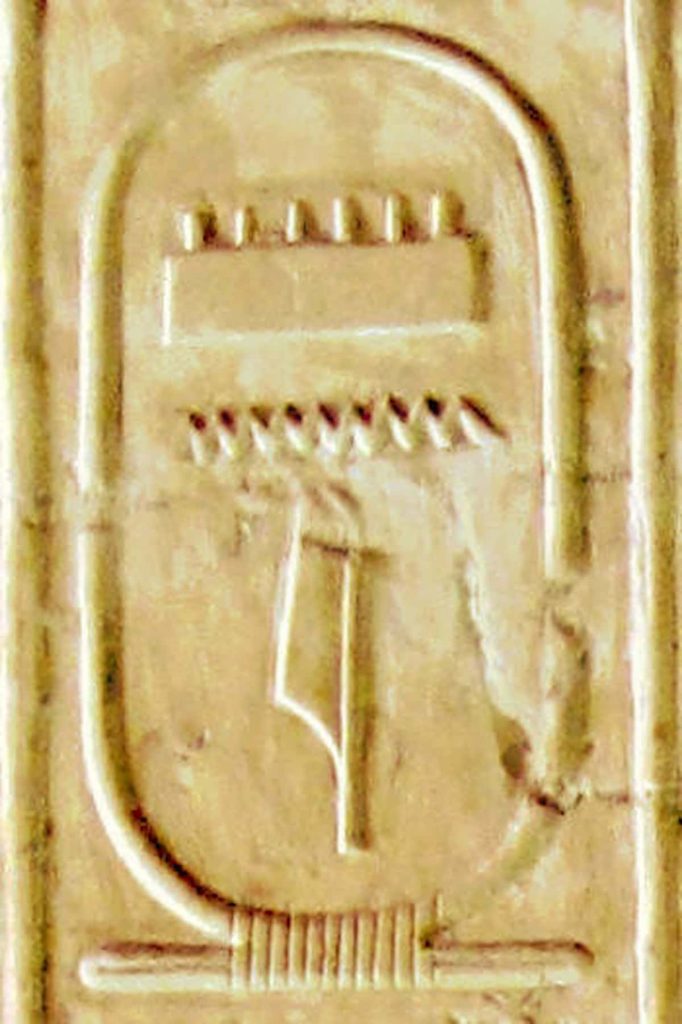
🔹 4. Hidden Messages: The Spiritual and Esoteric Side
As the Egyptian hieroglyphs were to a great extent embedded in religious and everyday life, the majority of the symbols also animate mystical and secretive imagery that is far from the mortuary and temples in the middle of the Nile. These words are still new to spiritualists, energy workers, etc., or those who follow beliefs such as Kemetism and metaphysical healing.
Consider the Ankh, which is the key of life no more, but is utilized as a symbol in Reiki, chakra work, as well as one’s practice of meditation on the flow of ‘unalterable truth’ without any thought of its termination. The Eye of Horus is typically put to use for the protection of psychic ability as well as opening the psychic faculties within the third eye region. The Scarab is utilized for purposes of spiritual coaching and modern-day magic in order to achieve change and personal elevation.
In the study of alchemical arts, graphic symbols of ancient Egypt are, on many occasions, equated with conceptions of spiritual consciousness rather than mere images. This view is shared by most Kemetists who see these symbols as more than general beliefs — rather, they are powers that help to reconnect with the Neteru (the Egyptian deities) from ancient times and gain wisdom from one’s ancestors.
Egyptian symbols remain as a perpetuation of moral teachings and spiritual development, both for people who continue to fulfill age-old traditions and learn with the help of such signs and those who have undergone the shine of the newer stages of such evolution. They are as useful in the present as in the past.
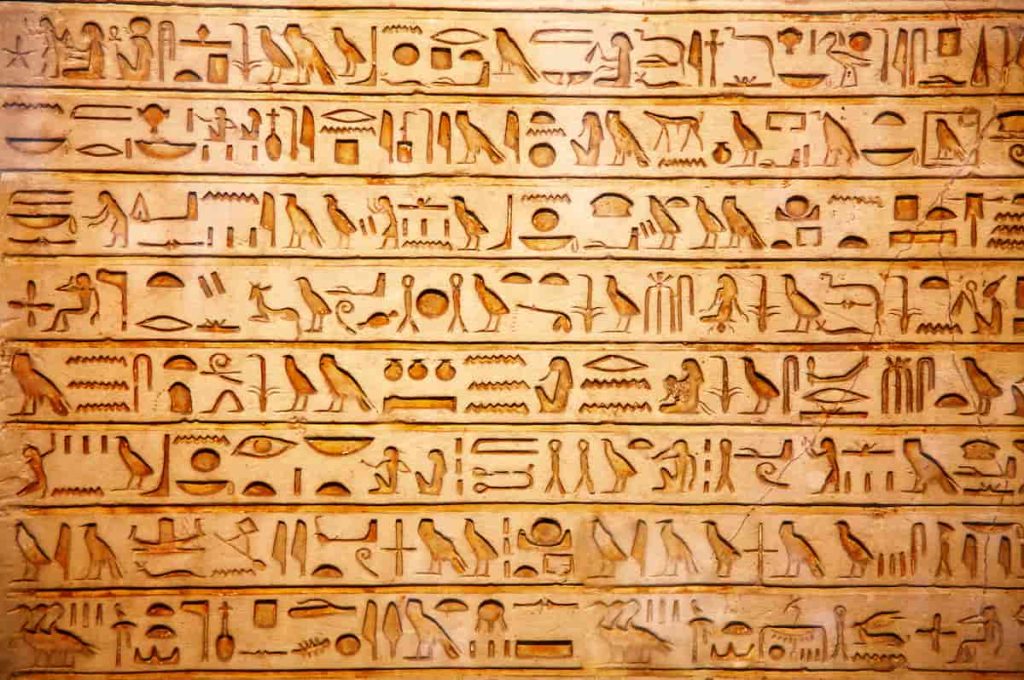
🔹 5. Egyptian Symbols in Modern Culture
Everyone knows that Ancient Egypt is the mother of symbols. One can see these symbols everywhere in the world, be it tattoos and the latest designs in clothes or music and films, and even the rampant branding. In case a person has a taste for such protective things as the Eye of Horus, namely in the forms of tattoos, it will be lost on seeing it everywhere. In addition, other popular aspects of Egyptian culture are the Ankh as a necklace and the beetles on extravagant women’s luggage and on the silver apparel. These images never lose the charm of their ancient splendor and domination, and therefore make them relevant even in modern culture.
Many people have appropriated elements of the Egyptian culture without fully appreciating their meanings and significance. Sometimes it results in the wrong interpretations. For example, the Ankh is sometimes interpreted as a “fancy cross,” an accessory associated with trends even after its earlier ancient usage. The Ankh has been interpreted differently in mainstream culture. As the symbol is auspicious for eternal existence or ethical consideration of gender, for most, as the symbol of love for girls.
There’s no denying that artistic creativity comes hand-in-hand with spiritual pursuits, and this gives room for observance of these elements in their rightful context. This is observable when drawing parallels between Kemetism, yoga, and energy healing, as the Ancient World is not used as a fashion statement but represents a tool for power enhancement and its defensive application.
Egyptian signs and symbols continue to be an object of discussion, as art often reflects the old more than the new.
🔹 6. How to Use Egyptian Symbols Today (Respectfully)
It may become a rather noble enterprise to acculturate these reminders of the Egyptian civilization, Hermitage symbols, sights, spherics, or whatever. So caution should be exercised when incorporating the symbols into one’s art, tattoos, etc. Do not forget that these unusual findings and interpretations represent a culture where everything about it is quite spiritual and logical.
If you are strongly intent on focusing attention on the Egyptian art of multiple usage or the Ankh, or the Eye of Horus, or even the Djed Column symbols, then do some background decoration in a temple in pictorial style, do it in your house, your home interior design, or in a diary. For instance, having an Ankh in any of your spaces used for meditation will certainly help you remember that there is an existence link in performing one’s duties in life. Adding a bowl on an ankle that carries your name written in hieroglyphics could show some mark of regard to one’s distinction and race, if it is done with the correct purpose and source search.
However, be mindful of the misuse of cultural elements. Employing these emblems, especially for the sake of art or commerce, without appreciating their culture can strip off their essence. To the best of one`s ability, work with creators, experts, and masters involved in or coming from the Nile Valley civilization and acquaint oneself with the contextual meaning behind the emblems and decoration you showcase or wear.
All in all, with the right employment, Ancient Egyptian Symbols will bring comfort, defense, union, and a vision of adoration in return to this blessed society.
🔹 7. Conclusion: The Everlasting Power of Egyptian Imagery
From inscriptions and drawings on temple walls to decorative art on pieces of jewelry, Egyptian symbolism has been an integral part of human culture throughout history. Such examples, in whatever form they are presented – the papyrus tales such as the Ankh, the falcon god Horus’ eye (a.k.a. the Wadjet) amulets, the design of a blue lotus help one to visualize the culture that decided to transcend the language of love and the wisdom of symbolic language.
In none of these instances were symbols simply represented as mere ornaments. They were always representations of universal principles or natural law, metaphysical truths, or aspects of the supreme being. They were integrated into the daily customs of the people, the rituals of government, and even the afterlife experiences. As of today, these symbols still carry meaning and are depicted in paintings, clothing themes, opportunities for personal expression (i.e., spiritualism or religion, etc.), and many more, spanning from a thousand years old to the present.
Although the symbols of Egypt have emerged from a greener era, the age of the Pharaohs, and Egypt’s great achievements, what’s even greater are the spiritual meanings behind those symbols. It does not matter who you are, an artist, a frequent flyer, a spiritually aware being, or a curious bookworm; you cannot explore enough of what lies ahead.
Please share what Egyptian symbol you like best, and what it has meaning for you. Express your thoughts in the comments—tell us how you manage to relate to these mighty traditions. And of course, take a look at other groups of ancient lore which contain the imperial monarchy of Egypt and every god present in their pantheon.

